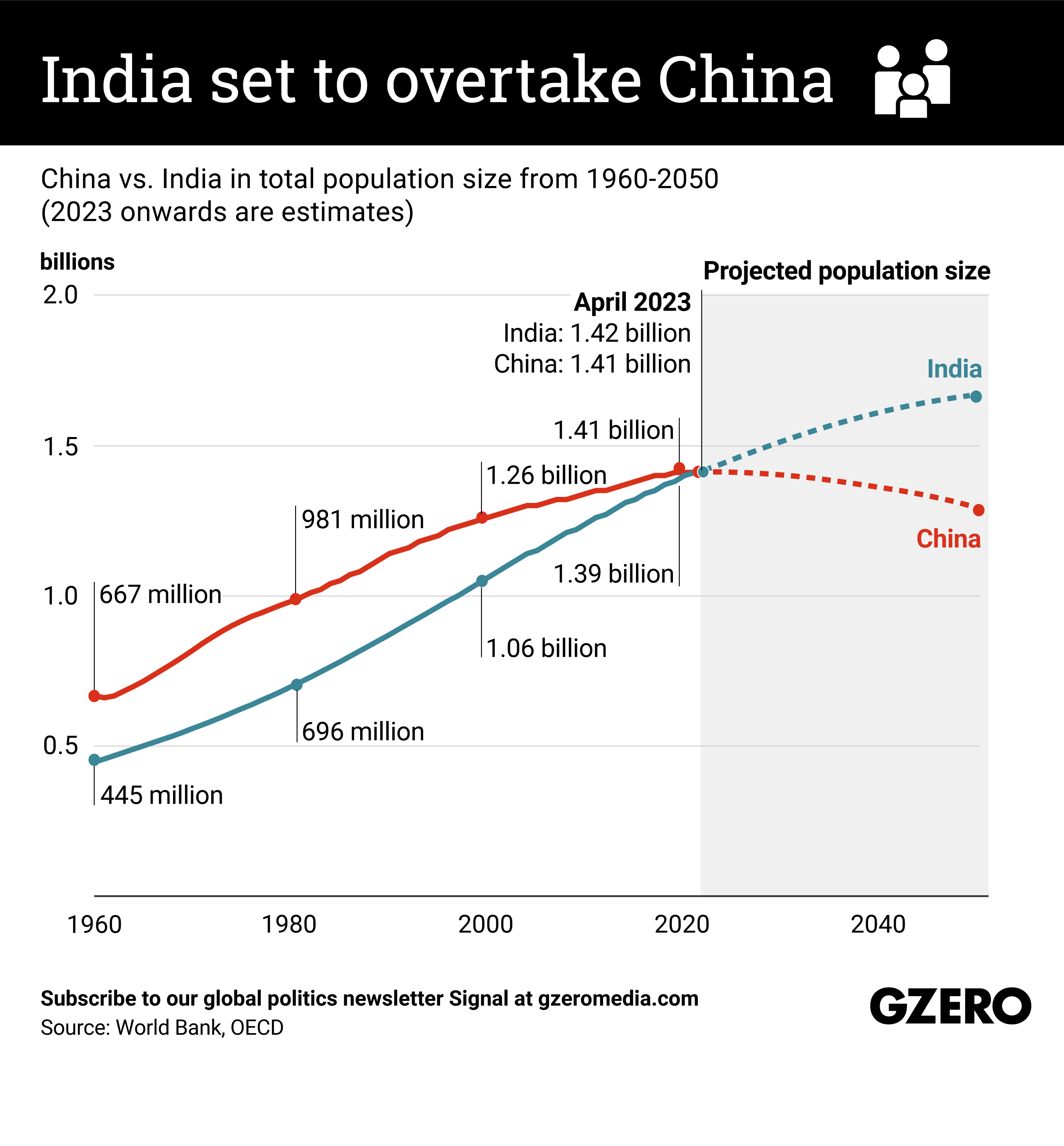January 22, 2023
In the next few months, India is set to overtake China as the world’s most populous country. With 70% of its people under the age of 64, India is in a prime position to expand its workforce and economic output — and solidify its place as a global economic juggernaut. By contrast, China’s population shrank last year for the first time since the 1960s. The growing elderly demographic is causing massive concerns about Beijing’s growth prospects, forcing the Chinese Communist Party to scrap its one-child policy in recent years. We compare the two countries' population sizes since 1960 and forecasts for the next few decades.
More For You
- YouTube
Is the AI jobs apocalypse upon us? On Ian Explains, Ian Bremmer breaks down the confusing indicators in today’s labor market and how both efficiency gains as well as displacement from AI will affect the global workforce.
Most Popular
Think you know what's going on around the world? Here's your chance to prove it.
Reform UK leader Nigel Farage holds a post-budget conference in London, United Kingdom, on Nov. 26, 2025.
Phil Lewis/WENN
Nigel Farage, the far-right UK leader, reportedly told donors that he plans to join forces with the center-right Conservative Party ahead of the next election. Right-wing groups in other parts of Western Europe have largely avoided making such an alliance.
Nearly four years into Russia's invasion of Ukraine, the push to end the war is intensifying. The past few weeks produced not one but two proposals.
© 2025 GZERO Media. All Rights Reserved | A Eurasia Group media company.
